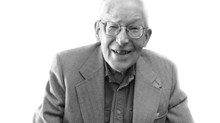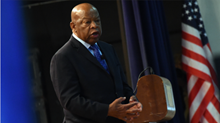“The glory of young men is their strength, gray hair the splendor of the old.” Prov. 20:29
Within a span of 24 hours, we learned of the deaths of two titanic figures—civil rights leader and United States Congressman John Lewis, and evangelical theologian J.I. Packer. Both were old—Lewis was 80 and Packer 93—but upon reflection, I couldn’t help but see each, in my own imagination, at radically different periods in life. With Lewis, I saw the smiling, young civil rights worker in the mug shot after his arrest in Mississippi. With Packer, I saw the frail, wizened theologian ambling through a library, a stack of books precariously cradled in his arms.
Lewis and Packer were both young once. Any who paid attention likely recall images of each from their youth—Lewis at the 1963 March on Washington, or Packer as a young scholar at Oxford. What intrigued me, however, was how the first image in my mind was of Lewis as the strident and exuberant demonstrator and of Packer as the elderly sage. I could envision the old John Lewis to be sure, but I had to work my way there from the past. For Packer, it was the reverse. Some of this is due, no doubt, to the primary callings of each. Lewis was a thinker and a politician, but his primary mark was as an activist. Most of us came to know Packer by reading his books on the authority of the Bible, or knowing God, or on the Puritans, or by reading his columns in Christianity Today.
But there’s more to it.
Our knowledge of these two stalwarts comes to us in the guise of what popular culture would call an “origin story.” In the narrative version of Lewis’s life—at least as we know it—a signature moment was the awful beating he suffered on the Edmund Pettus Bridge in 1965. When we reflect on that horrific incident—whether in history books or film or the graphic novel about his life, The March—we can see its consistency with the rest of his life—the lawmaker fighting against repeal of voting rights laws or the elderly congressman walking across the House floor to embrace an ailing white U.S. senator of the opposing party grappling with disease. Many of us could still see in his aged face the expressions of the young man with a head injury, or the smiling mug shot after his Mississippi arrest.
With Packer, it’s the reverse. Whatever pictures of the young scholar we may see, we project backwards the light of the revered elder evangelical statesman who carefully reasoned us through the importance of biblical inerrancy, or who modeled a calm and non-vindictive demeanor when assailed by separatists of a narrower Calvinism who rejected his work with Roman Catholics and higher-church Anglicans, or when lambasted by progressives in his Anglican Communion for his refusal to “evolve” on matters of sexual morality.
The reason for this difference, to me, has to do with the integrity of each. Lewis’s youth comes first to our minds not because his early life was more accomplished than his later life (he was a skillful legislator and orator to the day of his death). Rather, what we see in the young John Lewis is the courage it took to sacrifice not just his life but also his youth. If Lewis had died on the Pettus Bridge or elsewhere in South during the violence of the 60s—a very real possibility—he would have been remembered as the young protégé of Martin Luther King, Jr., and as a valiant hero. But we would have missed witnessing what it looks like for the courage of youth to encompass an entire life. Even in the throes of pancreas cancer, to see Lewis standing with protesters against racial injustice after the death of George Floyd is to see the courageous young Lewis of the Edmund Pettus Bridge standing there too.



No comments:
Post a Comment